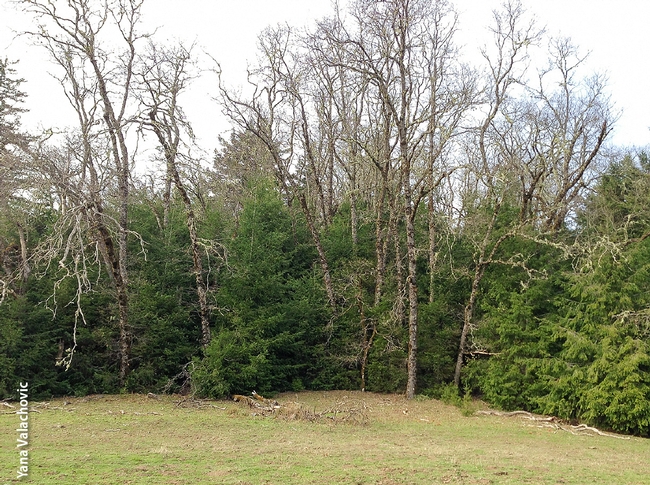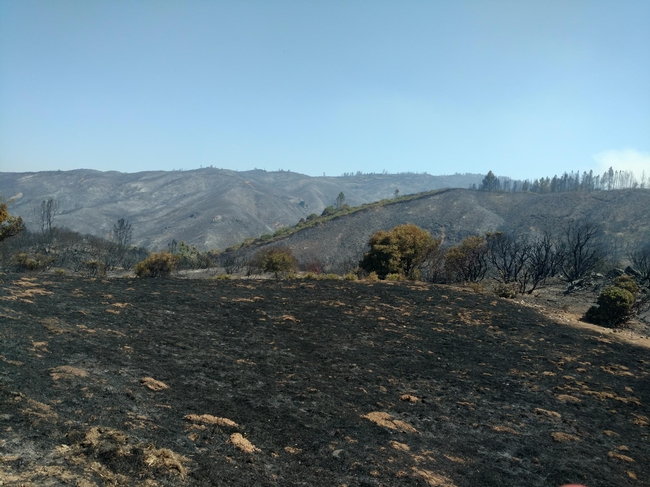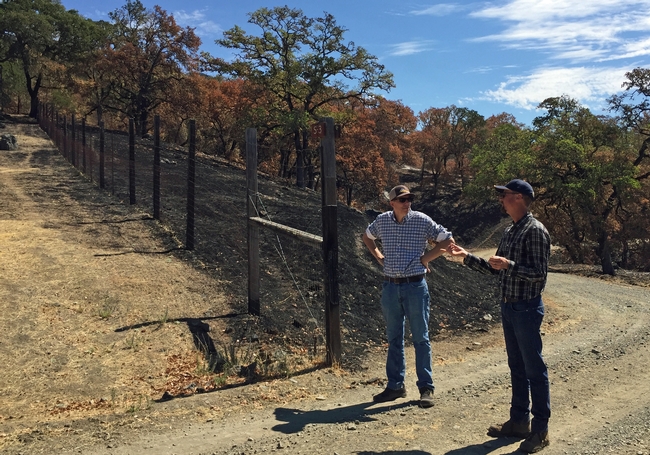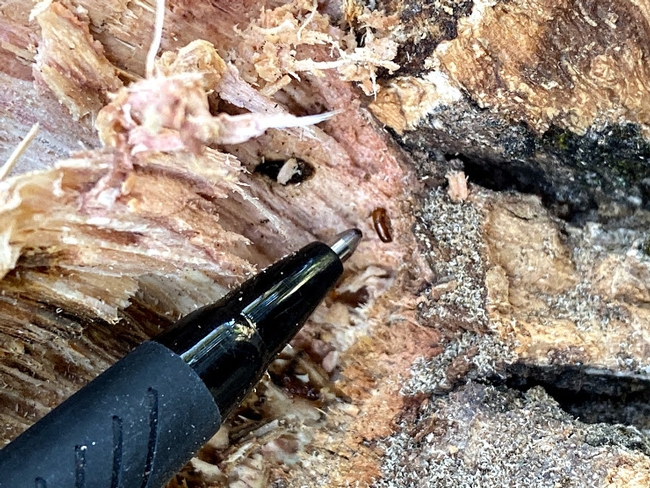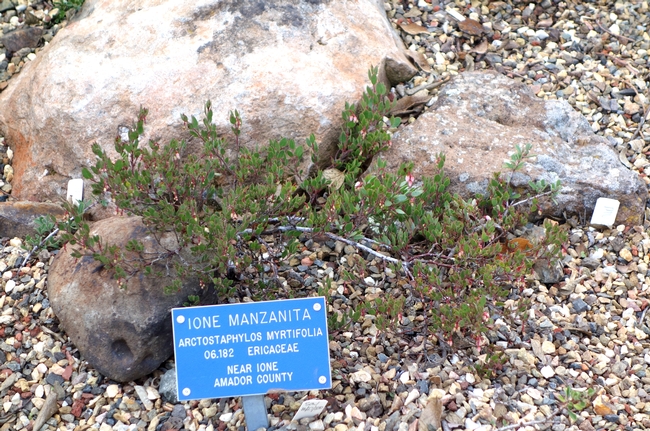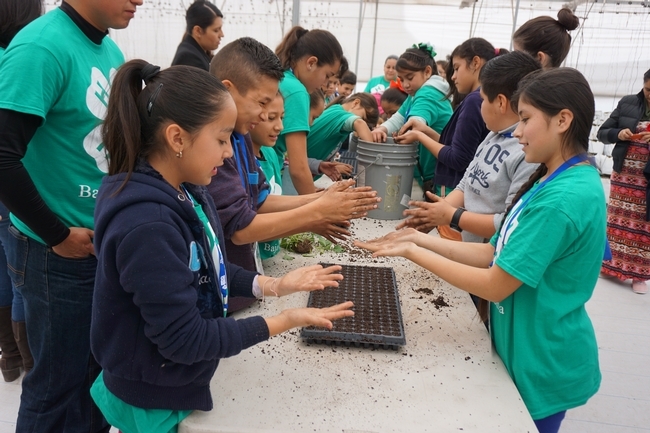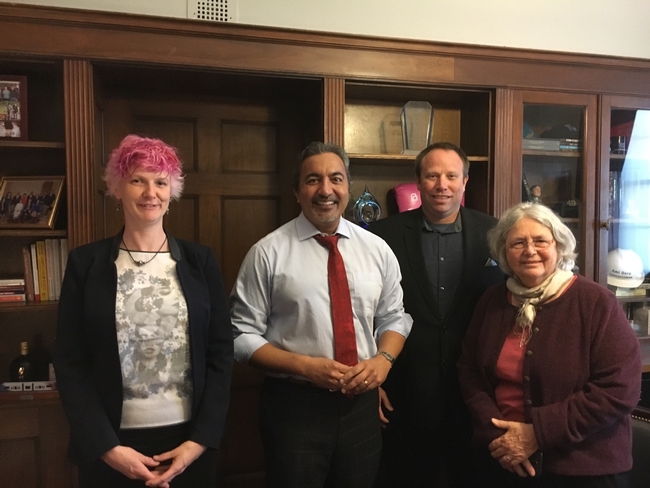Posts Tagged: oak woodlands
Hundreds sign up for online oak woodland workshop
California oak woodlands are highly prized ecoregions where stately trees, many of them hundreds of years old, are cornerstones of a habitat for wildlife and native plants. Sadly, some of these ecosystems are seriously threatened by exotic pests and diseases, encroachment by less desirable vegetation, and wildfire.
Each year, UC Cooperative Extension hosts workshops to share scientific developments aimed at conserving these important habitats – and the economic value of ranching – on oak woodlands, which are found on the lower elevation slopes of the Sierra Nevada, the Coast Range and other foothill areas of California.
Typically, the workshops are held in person and draw moderate-sized audiences for presentations, questions and answers, and field trips. Because of the COVID-19 pandemic, this year's workshop was offered online in April with pre-recorded presentations available for viewing at the participants' convenience and a live question-and-answer session on Zoom.
The retooled event garnered 500 registrants, over 300 views of the YouTube videos and 140 participants in the live Q&A session. The presentations and Q&A session are still available online for future viewing as well.
“People from all walks of life participated, including those with professional and personal interest in oak woodlands,” said Yana Valachovic, UCCE forest advisor in Humboldt and Del Norte counties and a conference organizer.
Presentations at the 2020 conference included the following topics:
Encroachment by Douglas-fir
In Northern California, the biodiversity of oak woodlands is being threatened by Douglas-fir encroachment. The oaks' shade helps the young conifers get established with protection from harsh sun. In time, the fast-growing Douglas-fir trees pierce the oak canopies and begin to crowd out the areas' native understories, which are important for the diversity of birds, mammals and reptiles attracted to oaks.
As the Douglas-fir continue to grow and multiply, they threaten the very lives of the oak trees and the unique ecosystem they dominate.
To better understand the Douglas-fir encroachment, Valachovic established 10 research sites in Humboldt and Mendocino counties to gather information about the fate and the age of oaks. She and her research partners determined the ages of the oaks and firs, and counted the seedlings, saplings, snags and understory vegetation.
“With this research, we were able to demonstrate that even though the oak trees can be smaller in diameter they are much older than the Douglas-fir trees,” Valachovic said. “The encroachment process is happening quickly, and the oaks are falling out of the system.”
The shift appears to have been initiated in the mid-19th and early-20th centuries, coinciding with the Gold Rush and wildfire suppression.
With the data confirming Douglas-fir encroachment, Valachovic turned her attention to oak woodland restoration. At 14 sites in Humboldt and Trinity counties, her team studied the effects of Douglas-fir removal.
“Grasses and forbs under the oaks reestablished. Diameter growth on the oaks increased,” she said.
These research findings contributed directly to changes in policy that had previously limited land owners' ability to remove and sell conifers encroaching on oak woodland. The research also helped create new funding opportunities to support oak woodland restoration and conservation in Northern California.
Case study of oak woodland wildfire recovery
In July 2018, about two-thirds of the 5,289-acre UC Hopland Research and Extension Center was burned by the River Fire.
The transformation of the land, which had likely been without a large wildland fire for at least 100 years, was intense and stressful, said UC Cooperative Extension forest advisor Michael Jones. However, it also provided a unique opportunity for researchers to compare the impact of wildfire on the resiliency of vegetation on grazed and ungrazed oak woodland.
Jones established 35 one-fifth acre research plots at the research center and collected data two months following the fire and one year later. The research will continue in the future to better understand long-term impacts, but Jones was able to share revealing early results at the workshop.
Right after the fire, in severely burned areas areas, the future of the oaks looked ominous. Jones predicted 40% tree mortality.
“The oaks were exposed to persistent, intense heat. They were cooked,” he said. “But two months after the fire, we were already seeing basal sprouts. This was an amazing response by the trees. Oaks are pretty damn tough.”
A year after the fire, surveys showed that tree mortality in the burned areas was 25%, much less than Jones' early predictions. While some management for specific situations in severely burned areas may be necessary – such as removal of hazard trees, reducing fuels in defensible spaces or removal to control invasive species – the results of this work show the trees recover naturally.
“Esthetically, I know these systems aren't as pleasing as they were before, but ecologically, they are healthy and recovering,” he said. “In 100 years, it will look just as good as before the fire.”
Fire impacts in woodland areas previously grazed and not grazed
The fire on the research station also permitted Jones to compare the fire's differing impact on non-grazed and grazed oak woodland. At first, the grazed areas looked almost unscathed with minimal flame scorching on the bark, while an area where the pasture hadn't been grazed for 25 years had evidence of much higher severity fire.
“Grazing is a phenomenal way to help manage fuels,” Jones said. However, the grazed areas displayed ecological shortcomings a year later.
“In grazed pastures, the large mature trees were still alive, but there was no oak regeneration (basal sprouting or seedlings),” Jones said. “In the ungrazed area, a lot of biomass had been killed, but there's nearly 100% resprout of oak trees and we have an impressive amount of oak seedling recruitment.”
Jones said he isn't discouraging grazing.
“But it is important to protect sites from grazing, and especially wildlife browse, when a landowner or land managers' objectives are to regenerate or conserve oak woodlands,” Jones said.
New ambrosia beetle another threat to California oaks
Akif Eskalen, UC Cooperative Extension specialist in the Department of Plant Pathology at UC Davis, has identified a new insect-fungus team that causes oak borer wilt in Northern California Valley and Blue Oaks. It is an ambrosia beetle, commonly known as Mediterranean Oak Borer, which carries several fungi in its mouth. The beetle bores into the tree and introduces fungi to grow for food. The fungi spreads and disturbs the transportation of water and nutrients, causing wilt in the tree.
The oozing and staining lesions on the bark are similar to other oak fungal diseases, such as Sudden Oak Death. The beetle – native of Mediterranean basin countries in Africa, Asia and Europe – cannot fly far, so most likely is transported for long distances on infested firewood.
During the workshop, Eskalen suggested not moving firewood, removing heavily infested trees and chipping infested wood into 1-inch particles to reduce the spread of the ambrosia beetle and its fungal partner. He asked viewers to report any suspected oak tree infestations to the local agricultural commissioner, CDFA Diagnostic Laboratories, UC Cooperative Extension advisors or CALFIRE. Chemical options for sparing oaks from the ambrosia beetles' devastation are under investigation.
Threats to oaks and other native plants from root rotting Phytophthora
Restoration plantings have inadvertently introduced plant pathogens to native oak woodland ecosystems in California, said Ted Swiecki of Phytosphere Research, an organization that provides consulting services related to natural resource management, horticulture, urban forestry, and agriculture. The group of pathogens causing the damage are largely from the Phytophthora genus, first described in the 1860s. The name translates from Greek to “plant destroyer.”
Swiecki has observed when Phytophthora infested plants and soils are introduced to native habitats, the pathogens can attack various native plants, including toyon, madrone, manzanita and full-grown oaks. Once established, the pathogen can spread along drainages, by moving soil from one area to another and by hitchhiking on equipment, tires and hiking boots.
The pathogen can easily be overlooked at nurseries, which, by their nature, have conditions that favor Phytophthora development. Plants at nurseries are well watered, have high root density and are often placed on the ground where they can pick up pathogens.
He said the best approach to tackling Phytophthora is not using nursery stock for restoration or beautification of natural oak woodland. Direct seeding, using natural regeneration, or onsite propagation are safer ways to enhance vegetation in oak woodland.
“It's easier to prevent Phytophthora from being introduced in the first place and much cheaper and more effective than trying to eradicate it later,” Siewcki said.
AVP Powers announces 51 proposals invited for competitive and high-reward grants
AVP Wendy Powers announced the letters of intent (LOIs) for which principal investigators have been invited to submit full proposals to ANR's Competitive Grants Program and High-Risk/High-Reward Grants Program. The list of 51 approved projects can be found at http://ucanr.edu/sites/anrstaff/files/261626.pdf.
This year ANR received a total of 108 letters of intent — 97 for the Competitive Grants Program and 11 for the High-Risk/High-Reward Grants Program. Strategic Initiative leaders and their respective panels reviewed all letters of intent thoroughly to address the appropriateness of the proposals in addressing the goals and criteria outlined by each funding opportunity.
ANR Competitive Grants Program
The purpose of the ANR competitive grants program is to address high-priority issue areas identified by at least one of the strategic initiatives: Endemic and Invasive Pests and Diseases (EIPD), Healthy Families and Communities (HFC), Sustainable Food Systems (SFS), Sustainable Natural Ecosystems (SNE), and Water Quality, Quantity and Security (Water).
ANR Competitive Grants Program 2017 Cycle:
- Full proposals due June 19
- Technical peer review: mid-June – early September 2017
- Strategic Initiative review and recommendations: end of September 2017
- Program Council review and recommendations: October/November 2017
- Announcement of funded grants: November/December 2017
High-Risk/High-Reward Grants Program
Given the complexity of societal problems, high-risk research is necessary to achieve gains for real progress in addressing present and emerging challenges. This program will provide funds to initiate and complete research and proof-of-concept efforts that serve as the basis for larger funding opportunities. These projects must be of a high-risk/high-reward nature that are best conducted in a controlled, research setting and, if successful, lend themselves to subsequent larger funding opportunities and/or intellectual property development.
Proposed projects must be within the scope of the ANR Strategic Vision. All ANR academics with PI status are eligible to apply. Proposals will be accepted using the same timeline as outlined for the traditional competitive grants program, but reviewed separately due to the nature of the proposal.
For questions about ANR's competitive grants program or high-risk/high-reward grants program, please contact Melanie Caruso at mmcaruso@ucanr.edu.
Nutrition Policy Institute launches Research to Action news brief
The Nutrition Policy Institute has launched a news brief called Research to Action. The publication will provide information on research, policy, news, announcements, events, articles and action items focused on nutrition and healthy communities.
The first issue looks at the work of the National Drinking Water Alliance (NDWA). NPI is the “hub” for NDWA, which engages in and coordinates evidence-based efforts going on all over the country to improve tap water safety and access, especially for children, and to provide drinking water education and promotion. The NDWA website is a “go-to” resource for information on drinking water.
Future editions of Research to Action will be sent several times per year. Please sign up for the Research to Action mailing list, and please share Research to Action with colleagues who would be interested in receiving it.
4-H calls alumni and friends to join its new network
If 4-H has touched your life, raise your hand. Visit http://4-H.org/raiseyourhand to voice your support for the California 4-H youth development program, help it win a national competition and connect with a network of 4-H alumni and friends.
You are considered alumni if you were in a 4-H Club, took part in a 4-H after-school program, served as a volunteer leader or taught a project. Friends of 4-H are also invited to raise their hands.
“Having experienced our programs first-hand, our alumni know about the positive impact of 4-H,” said Glenda Humiston, vice president of UC Agriculture and Natural Resources and a 4-H alumna.
As part of the new 4-H network being built in the 4-H Raise Your Hand campaign, members will get news about 4-H programs in California and stay in touch with a program that made a difference in their lives.
“I've raised my hand,” said Humiston, who credits 4-H with helping her become the first in her family to attend college. She later served in the Peace Corps, received a federal appointment from President Obama and now leads the statewide research and outreach arm of UC.
The National 4-H program, which currently empowers nearly 6 million youth across the country, aims to extend its reach to 10 million by 2025. It has launched a competition among states to see which ones can add the most alumni and friends to the network by June 30, 2017. A map showing the current front runners is on the registration page.
Educating policymakers about UC ANR
Hogan visits Capitol Hill
In early April, Sean Hogan, academic coordinator II for Informatics and Geographic Information Systems, presented at the AmericaView Winter Business Meeting, in Reston, Va., as representative of the CaliforniaView section of the consortium of remote sensing scientists. Hogan spoke about some of the ways that UC ANR is using drones to advance environmental and agricultural research. While he was near Washington D.C., Hogan went to Capitol Hill to meet with Congressman Ami Bera, Congressman Paul Cook and staffers for Senator Diane Feinstein.
Read more in the IGIS blog //ucanr.edu/blogs/blogcore/postdetail.cfm?postnum=23768.
Congressman Costa visits UC CalFresh class in Madera
When United States Congressman Jim Costa learned about the federally funded nutrition education programs being offered in his district, he made plans to visit.
He wanted a first-hand experience with UC CalFresh, in which UC Cooperative Extension educators visit classrooms to share new foods, teach healthy eating strategies and demonstrate physical activity to children and low-income families.
Read more in the Food blog http://ucanr.edu/?blogpost=23767&blogasset=91109

